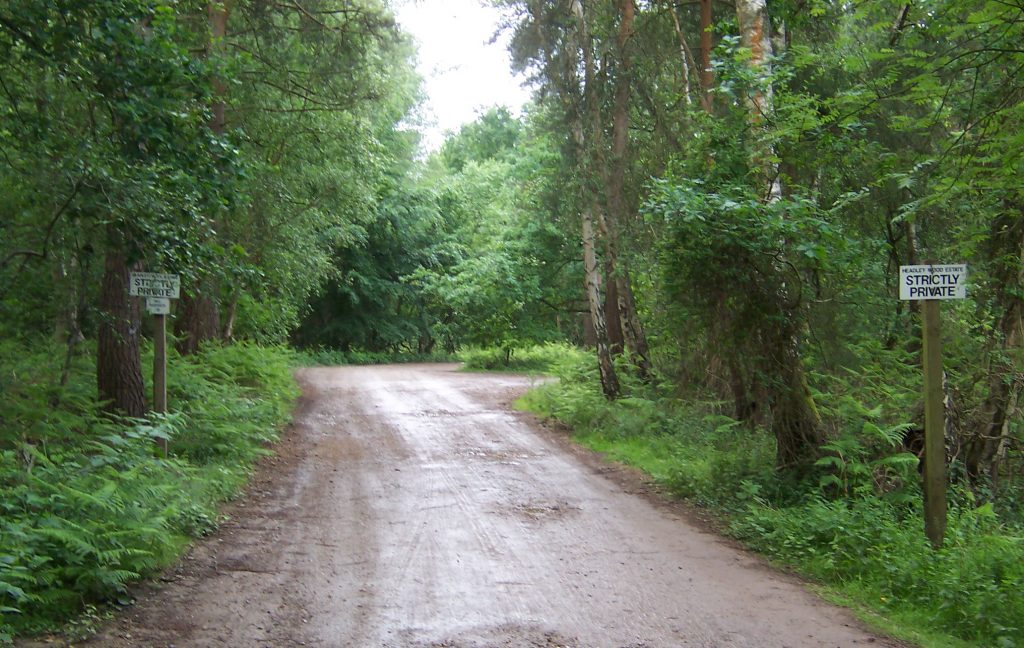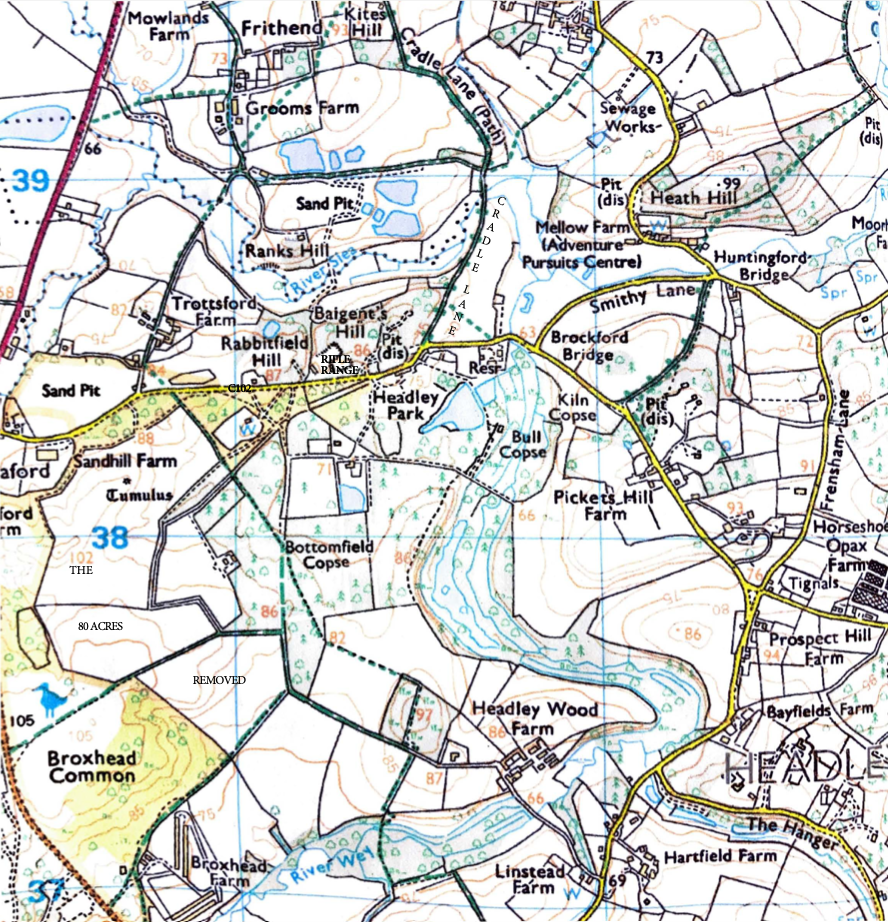The Battle for Broxhead Common

Broxhead Common. No horse riding signs erected 1997
The Case for Hampshire County Council – PART 66
- Dr. L. Ellis Tavener’s book entitled ‘The Common Lands of Hampshire’ is a survey of the common lands of Hampshire undertaken at the request of Hampshire County Council in 1956. It is interesting to see in the Introduction that his initial thanks go to:
Mr Alan Lubbock J.P., D.L., Chairman of the Hampshire Council and Vice Chairman of the Royal Commission on Common Land; Mr G. A. Wheatley, M.A. B.C.L., Clerk of the Hampshire County Council and Chairman of the Committee set up by the County Councils Association to prepare recommendations for submission to the Royal Commission; followed by various other departmental officers of the Council as well as the Commons Open Spaces and Footpaths Preservation Society and various colleges and other bodies. - In his Analysis of Commons by Administrative Areas he lists Broxhead and Kingsley Commons as being requisitioned by the War Department and Part 3 describes the soils of the commons which ends by saying: “Where the soils are particularly poor or the topography discourages cultivation the land has remained as commons and as will be seen from the maps, this part of the county contains another distinct group of common land. For instance, where the lower greensand crops out from beneath the Gault there are extensive areas of heathlands, which are mostly common, as around Bramshott, over the greater part of Woolmer Forest, Broxhead Common and Kingsley Common.”
- Much advice about the laws affecting commons is given and of particular note the importance of Section 193 and Section 194 Law of Property Act 1925.
Sec.193 “Under S193 the public must have right of access for air and exercise.
Sec.194 “imposes certain restrictions on the construction of any work whereby access to common land is prevented or impeded. It also confers powers on ‘the council of any county or borough or district concerned with regard to the enclosure of commons. Under S.194 the County Council may apply to the County Court for an order for the removal of any
building or fence or any other work which obstructs access to common land and for the restoration of the land to its former state.” - Apparently when the Ministry of Agriculture, Fisheries and Food gave evidence before the Royal Commission on Common Land in March 1956, one of the witnesses was asked to give the background on these sections of law. The statement was lengthy but the most notable was the following; “In fact, the effect of Section 194 seems to have gone wider than intended because it applied, we were advised, to all common land and not only common land to which there is a right of access.”

1962 Pages from Broxhead Common, 80 Acres removed and track by the tree nursery
Next time: The Commons Registration Act 1965.
